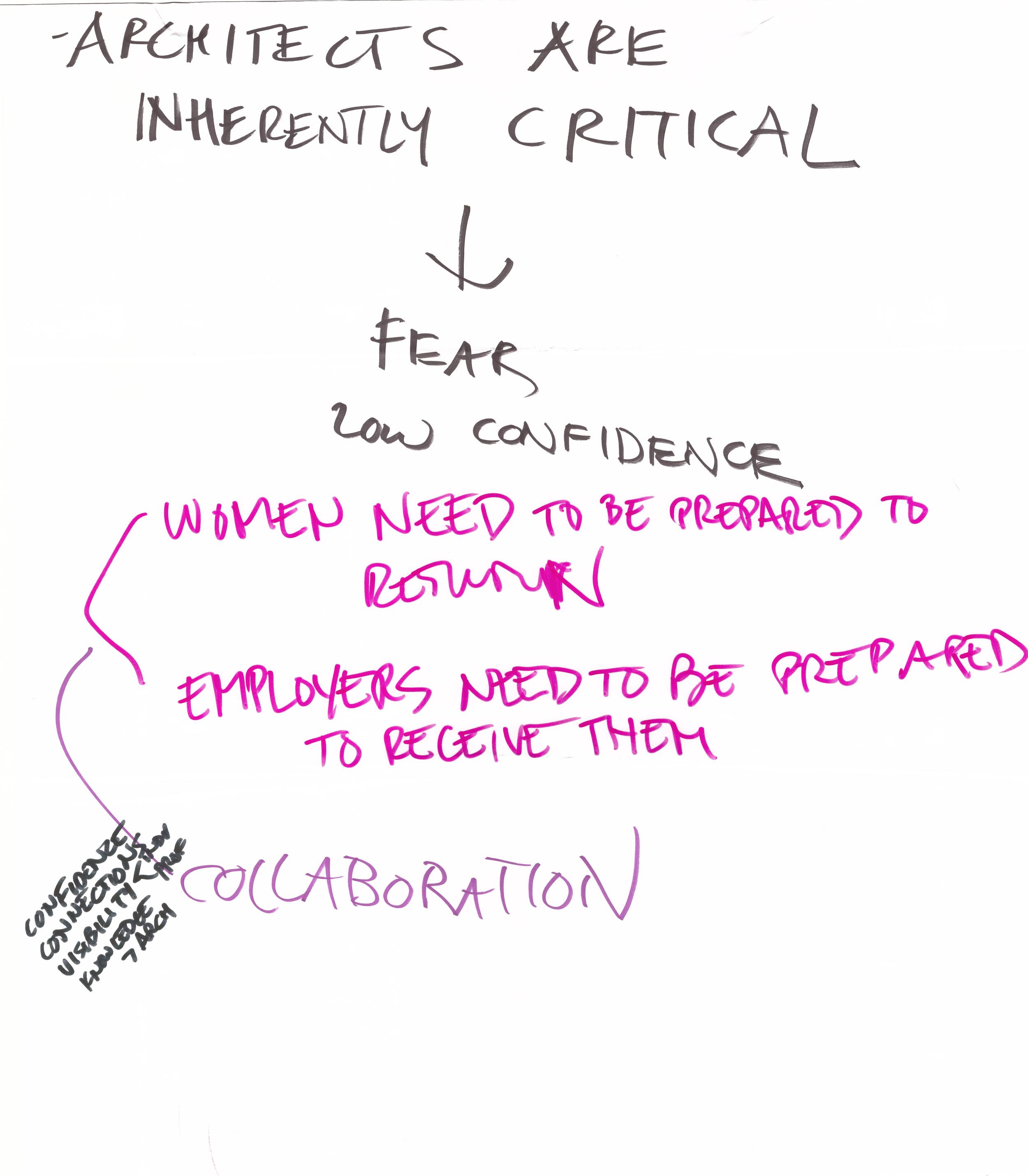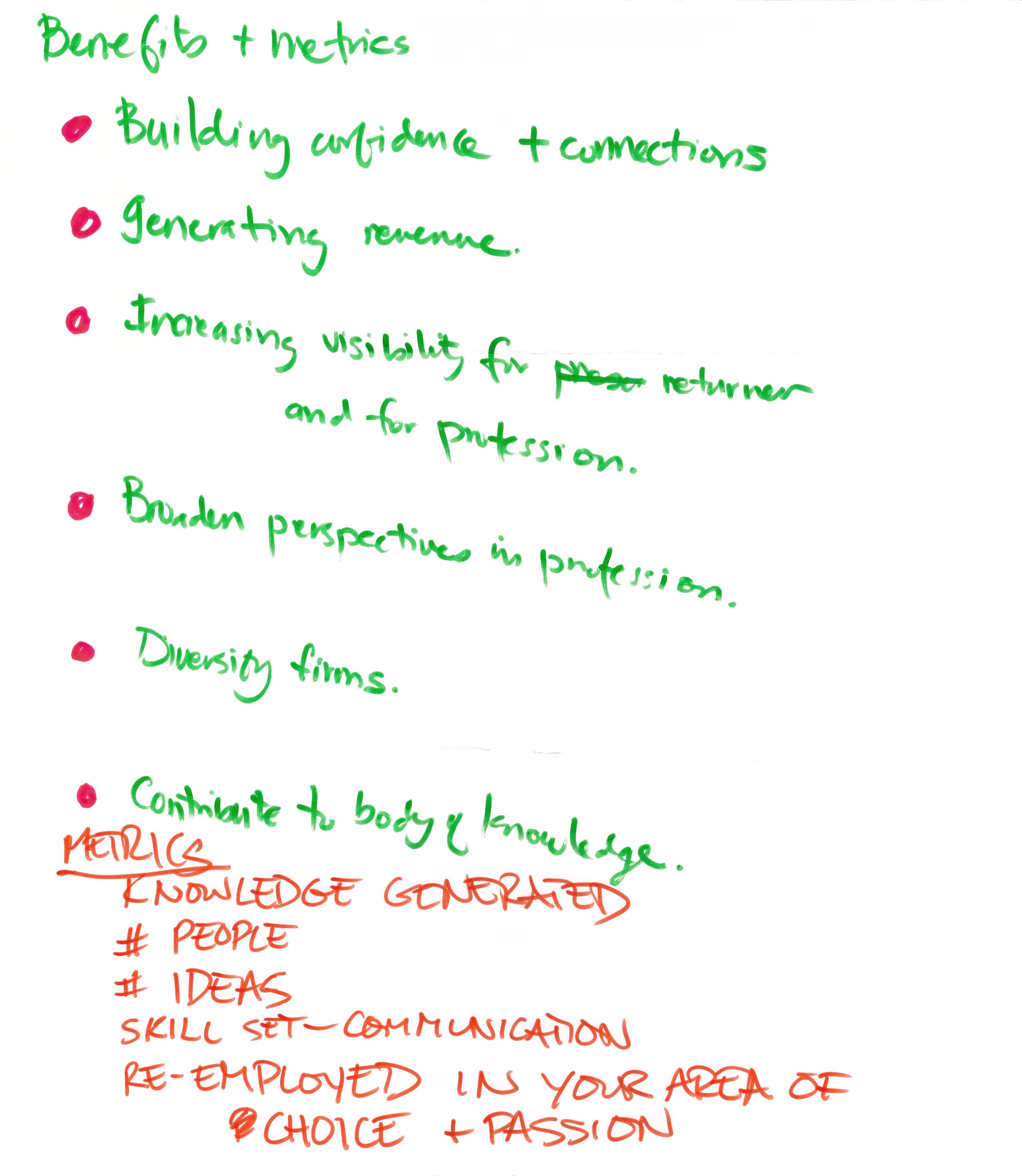by Lucy Irwin
I am one of those women who was passionate and determined to be an architect. Who powered through grad school, worked hard at my internship, achieved licensure, and worked on the A team. I loved being an architect. But after my 3rd child was born, I stepped off the career track; every year thinking, “next year I’ll get back on track.” I kept my California License current, never separating my identity from that of the passionate architect. But years piled up.
I launched three children, and now, I can devote myself to my first love, practicing architecture. In December I rejoined the AIA and found Equity by Design. What a stunning group of smart, action-oriented, creative problem solvers – the A Team! Through informational interviews with architects in the Bay Area, I am figuring out where my skills and passions align with the current practice of architecture.
Living close to Silicon Valley, we learn about new technologies almost by osmosis. Architects are fighting for every project they get, and doing things the same old way just does not cut it anymore. Companies like IDEO and Google are using technology and design thinking to solve problems, and we architects need to adapt to changing technologies and opportunities. When I found out that Equity By Design was sponsoring a hackathon at the AIA Convention, I was excited to join in and try my hand at this creative problem solving process.
In the hackathon, it was inspiring to meet a room full of people, passionate about changing the practice of architecture, and making it relevant to the 21st Century. Instead of being fed information, we created new knowledge by sharing our insights and experiences, hacking the pinch points in the practice of architecture.
Our group “hacked” the subject of how architects can relaunch after taking time away from the profession, and how to present returnees as an asset to firms. We started with defining the problem:
What makes it difficult to return and how do we encourage/support those returning to Architecture?
Liability to Asset
Some of the factors that make it difficult to return to the profession of architecture are the challenges of staying current, the narrow perspective of what architecture is, the competitive nature of architecture and architects, and the confidence conundrum. We considered the fact that once a person is trained as an Architect, they continue to see the world through an analytical, creative and problem-solving lens. While time away from a conventional office setting may be seen as a liability, it can provide an opportunity to develop other skills such as leadership, focus, entrepreneurship, a deeper understanding of client needs, and project management, as well as developing connections to the community.
We also discussed a challenge the profession is still battling; the lack of understanding by the general public about what architects do. We saw an opportunity for the profession to leverage the voice of those who are not actively practicing in a conventional firm. For these individuals to be ambassadors to the public; to demonstrate how architects innovate, to think strategically, and to add value by creating more productive environments.
Our Hack
Throughout history (We can thank the French for this one) “Salons” have provided an environment where members meet regularly, with a variety of stakeholders, to present research or projects to one another. At our hack we discussed how the forum of the salon would provide a great entry point for returnees. The salon offers a deadline, an audience and the opportunity to develop communication skills. The benefit to the individual is a structure to present in front of an audience; the benefit to the audience is an opportunity to gain new knowledge, network, develop camaraderie and broaden insights. In hacking the “Salon”, we can create communities which support and challenge returnees to share an area of expertise, and build confidence in their ability to present their ideas publicly. We imagine these salons including not only architects, but also allied professionals and community members who are interested in understanding how architects enrich the built environment. Potential employers/clients could see an individual in action, presenting design and research, showcasing their skills, approach and talent.
There are a number of key performance indicators we recommend analyzing to determine if salons are an effective tool for encouraging and supporting returnees:
- number of people who participate in the salons
- number of presentations
- number of new clients generated
- amount of knowledge generated
- number of people re-employed in their area of choice and passion
The Salon concept for Returning Architects presented by Nancy Alexander for the team.
As promised, time flew by, and before we knew it, it was time to come up with a pitch. Ours was not as catchy or pithy as needed to win the hackathon, but I certainly won new skills and insights in the process. It was exciting to watch the other groups present their hacks, and the message of the winning team, is a valuable message for surviving any of the pinch points in your career: #BuildYourTribe.
The hackathon was part of that warm welcome back to architecture, Lilian Asperin Clyman has been talking about. New technologies allow people to work remotely, collaborate, and build teams across geographical, cultural and temporal boundaries. But some activities are still better in person, and a hackathon is one of those in-person events, where individuals can learn from each other, test ideas, and find out what resonates.
I’m looking forward to my next opportunity to hack. My first hackathon was a chance to use my design thinking skills in a fast paced collaborative environment and learn from a diverse group of architects and other allied professionals. I came away from the event inspired to build my tribe as I relaunch my career. Maybe I’ll even start a salon! And next time I hack, I’ll be more confident presenting my ideas, using some of the techniques I saw in action. Maybe I’ll even use a hashtag, take a few selfies and tweet you the results!
Meaning & Influence: Returning to Architecture
Team Members
- Lucy Irwin
- Nancy Alexander
- Jayshree Shah
- M. von Nkosi
READ MORE ABOUT WE310 EQUITY BY DESIGN HACKATHON RECAPS
#BUILDYOUrtribe – Equity by Design Hackathon 2015 Winners
- When Working Hard Hardly Works
- Promotion and Advancement: How to champion the Pull.
- We need to Hack more!
- I am not an Architect
- How does going to a Hackathon make re-entry easier?
- Interrupt workplace bias, be a "Change Agent"
- Reflections from the EQxD Hackathon Jurors
- Conscious Inclusion: #BUILDYOUrtribe
What's next for EQxD?
Join us in San Francisco at AIASF on June 11th for our next EQxD "U" Workshop "What's Flex got to do with Success?" (Win Win Strategies for Work/Life Flexibility) Meet the panelists, and participate in small group break-outs to "hack" what works for flexibility in the modern workplace. This event is relevant to all AEC professionals! 6pm-8:30pm.





